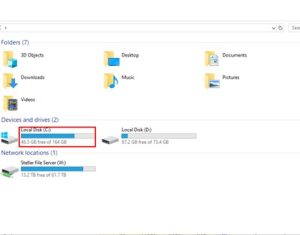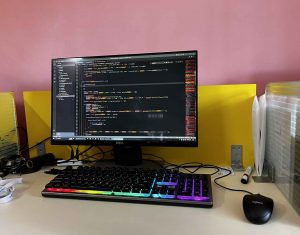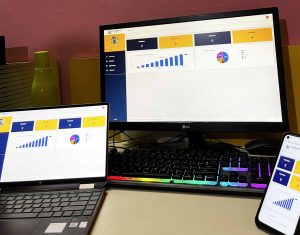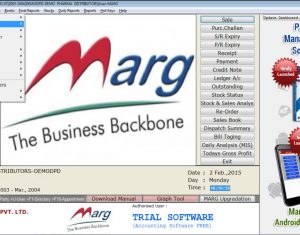Developing reliable, error-free software is undeniably a never-ending task in the evolving field of software development. Rigorous testing procedures are an undeniable necessity for guaranteeing that software functions as intended throughout the development cycle. TDD (Test-Driven Development) and BDD (Behavior-Driven Development) are two well-known approaches that have gained popularity in tackling typical software development issues. This article explores how exactly these approaches improve software product quality and aid in avoiding frequent errors.
How TDD Assists in Avoiding Common Pitfalls?
1. Expliciting Requirements Early

Software Development Company – Ujudebug
The TDD best practices push developers to consider requirements and edge situations much before developing code. Developers may thus reduce the possibility of requirement ambiguity by clearly knowing what the program must perform by developing tests beforehand.
2. Assuring Excellent Code Quality
TDD additionally promotes the generation of brief, targeted tests, ensuring that code is continually tested as it is being produced. Because they constantly modify and optimize their code to pass the tests, developers who follow this technique write cleaner, more cohesive code. Additionally, it encourages implementing best practices, which improve the readability and maintainability of code, such as condensing and simplifying functions.
3. Encouraging Smooth Integration
Testing each piece of functionality helps detect integration problems early on with TDD. Developers can identify integration issues before they become serious since every unit is tested individually and in combination with other components. This makes the system stronger and more unified.
4. Boosting Test Coverage
Since every unit of functionality is tested before it is developed, TDD naturally results in improved test coverage. By ensuring that the majority, if not all, of the codebase is tested, this approach lowers the possibility of problems in production by identifying flaws at the beginning of the development cycle.
5. Delivering Quick Responses
TDD offers an instantaneous feedback loop, which is extremely helpful. Instant feedback on code modifications is sent to developers, enabling them to resolve problems quickly. This quick iteration cycle aids in the early detection and elimination of defects, resulting in speedier development cycles and lower costs.
How does BDD Assist in Avoiding Common Pitfalls?
1. Improving Interaction and Cooperation
BDD emphasizes drafting tests in simple language that non-technical stakeholders can comprehend. Typically, a common knowledge of the needs and expectations among all project participants, from developers to business analysts, is made possible by this emphasis on transparent communication. Moreover, by working together, one can lower the possibility of miscommunication while also ensuring the program satisfies the user’s demands.
2. Paying Attention to User Conduct
BDD ensures that the application operates as intended in real-world settings by putting the user’s perspective front and center. In BDD situations, the Given-When-Then structure is used to assist in defining requirements that are clear, short, and centered around the desired behavior of the application. This method aids in producing a user-centric product that satisfies the requirements and expectations of the consumer as a whole.
3. Closing the Gap between Innovation and Business
BDD builds a link between team members with and without technical expertise. BDD assists in coordinating the development team’s efforts with business goals and objectives by including all stakeholders in the process and utilizing a common syntax. This alignment facilitates the development of software that is both beneficial from a commercial standpoint and technically solid.
4. Eliminating Ambiguities in Requirements
Requirement ambiguities are minimized in BDD scenarios since they are created in conjunction with business stakeholders. Writing detailed descriptions of the intended behavior of an application in the form of scenarios aids in the clarification of requirements and establishes expectations for the development team.
5. Promoting Extensive Examination
BDD encourages creating thorough test scenarios that address all facets of the application’s behavior. This all-encompassing testing strategy guarantees that the application is adequately tested, further lowering the possibility of errors and issues being unnoticed in production.
What Distinguishes BDD from TDD?
Regarding the primary difference between TDD and BDD, TDD is more developer-centric and essentially emphasizes using tests to guide code creation. This guarantees that every functional component functions just as intended. BDD, however, emphasizes the application’s behavior from the user’s viewpoint and is more stakeholder-centric. BDD scenarios are created so that non-technical stakeholders may grasp, thus resulting in improved communication and cooperation.
Utilizing ACCELQ to Maximize TDD and BDD
BDD and TDD implementations are well supported by programs like ACCELQ, which facilitates automated testing and continuous integration by enabling smooth integration with various development tools. Teams may guarantee that their tests are always run and tracked by utilizing ACCELQ, resulting in faster delivery cycles and better software.
Conclusion
TDD and BDD are effective approaches that aid in avoiding typical software development errors. These strategies guarantee that software is reliable, maintainable, and satisfies user expectations by emphasizing early and frequent testing. TDD and BDD are essential techniques in contemporary software development because they may significantly enhance code quality, teamwork, and project success altogether.












 [/one_third][two_third]With a team of skilled software Developers, Ujudebug is the best IT Solution Company in Assam. Fully Customized Software Development services with multiple platforms. Our award winning team will we provide the best experience to customers at an affordable price.
[/one_third][two_third]With a team of skilled software Developers, Ujudebug is the best IT Solution Company in Assam. Fully Customized Software Development services with multiple platforms. Our award winning team will we provide the best experience to customers at an affordable price.